by James Jay Edwards
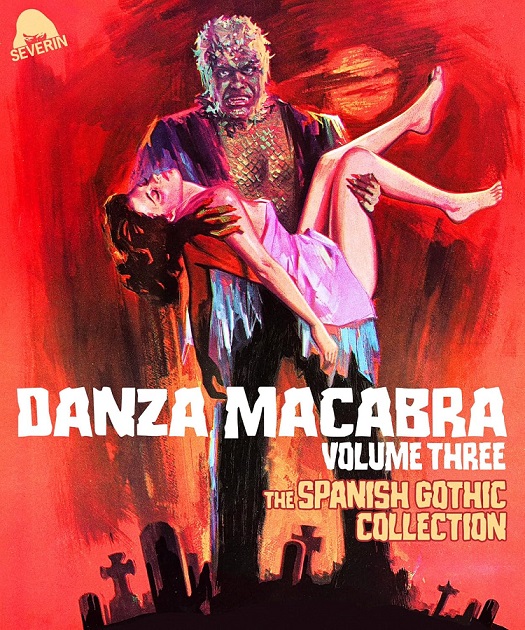
The folks at Severin films are great at restoring older and hard to find movies. Their first two Danza Macabre volumes were Italian Gothic collections, but with the new Danza Macabra Volume Three, they’re hopping over to Spain for the Spanish Gothic Collection.
The four films included in the Blu-ray set are all products of late Franco-era Spanish filmmaking, and it’s a pretty decent lineup of restored Spanish horror classics which range from “mildly obscure” to “previously lost.” Each film has its own disc in the collection, and the titles included are Necrophagous (1971), Cake of Blood (1971), Cross of the Devil (1975), and The Night of the Walking Dead (1975).
Disc 1 is Necrophagous, the 1971 debut film from writer/director Miguel Madrid (made under the name Michael Skaife). Also known as The Butcher of Binbrook and Graveyard of Horror, Necrophagous is about a nobleman who returns home to find that his wife and unborn child have both died during childbirth. While searching for answers as to why, he discovers his wife’s coffin empty, and reveals a crazy plot about occultists in robes, scientific experiments, and lizard people.
The movie is just as strange and disjointed as that synopsis makes it sound. The script feels as if Madrid started writing a supernatural horror movie about missing corpses, then decided that it would make a better science fiction film about experiments gone awry. It has a certain charming aesthetic that lets the audience forgive its flaws, though, with a bright look that resembles an Italian spookfest and some melodramatic acting that serves the fragmented story well.
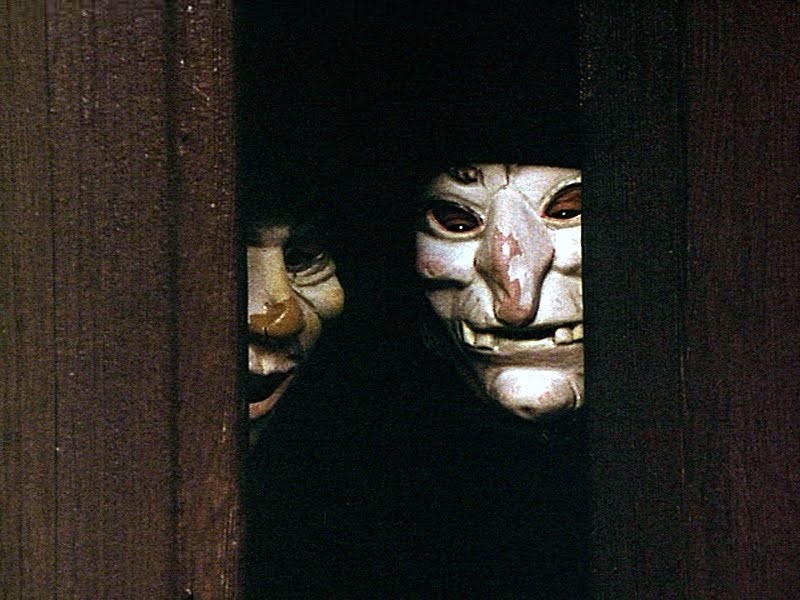
The transfer, scanned in 4K from a recently discovered negative, looks great. This is one of those movies that really has no business looking as good as this disc does – it seems like a VHS barrel discovery. The crisp, sharp visuals bring out the flaws in the low budget film, seemingly emphasizing every jump cut and lingering shot. If you don’t take the movie too seriously, the clarity is a blessing.
Audio is in English Mono and Spanish Mono, with captions. The aspect ratio is 1.85:1.
As for the bonus features, there’s a terrific commentary by Andy Marshall-Roberts, host of The Nasty Pasty Podcast, who either has an encyclopedic knowledge of film or is a meticulous researcher, because he tosses in bits of trivia about seemingly everyone involved in the movie as well as humorous little observations about the film and deeper analysis of the filmmaking techniques. Marshall-Roberts knows his stuff and is entertaining as he shares it.
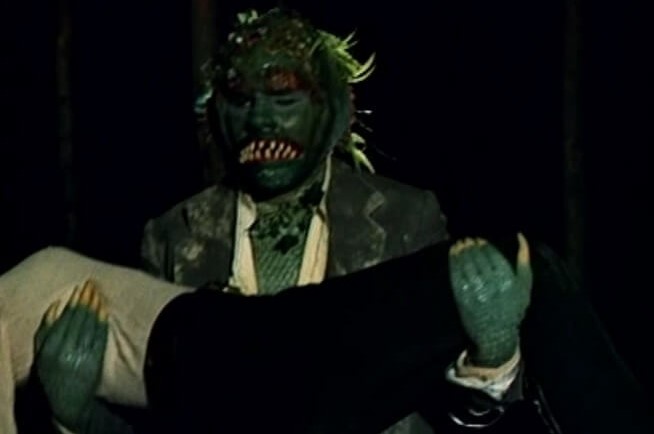
There are also a couple of interviews included in the features. Something You’ve Never Seen is a video interview with Sitges Film Festival Head of Programming Angel Sala, and The First Horror Film Festival in the World is an interview with Maria Pilar Rafáles, who is the daughter of Sitges Film Festival founder Antonia Rafáles and secretary of the festival. Both talk about the beginnings of the Sitges festival and remember the year that Miguel Madrid won best director for Necrophagous.
The features are rounded out by trailers for the film when it was released as The Butcher of Binbrook and Graveyard of Horror.
Next up is Disc 2, Cake of Blood, a 1971 anthology film which is basically four short films, each depicting a different time period of horror tossed together into a feature in the old Amicus style. José Maria Vallés’Tarot is a surreal middle-ages tale of romance and extremism. Emilio Martinez-Lázaro turns in his 19th century version of a classic with Victor Frankenstein. Terror Among Christians, directed by Francesc Bellmunt, is a ghosts-and-vampires story about Christians running from the Romans. And finally, Jaime Chávarri brings a modern-day (for 1971) home invasion-turned-supernatural tale called The Dance, or Emotional Survivals to the table.
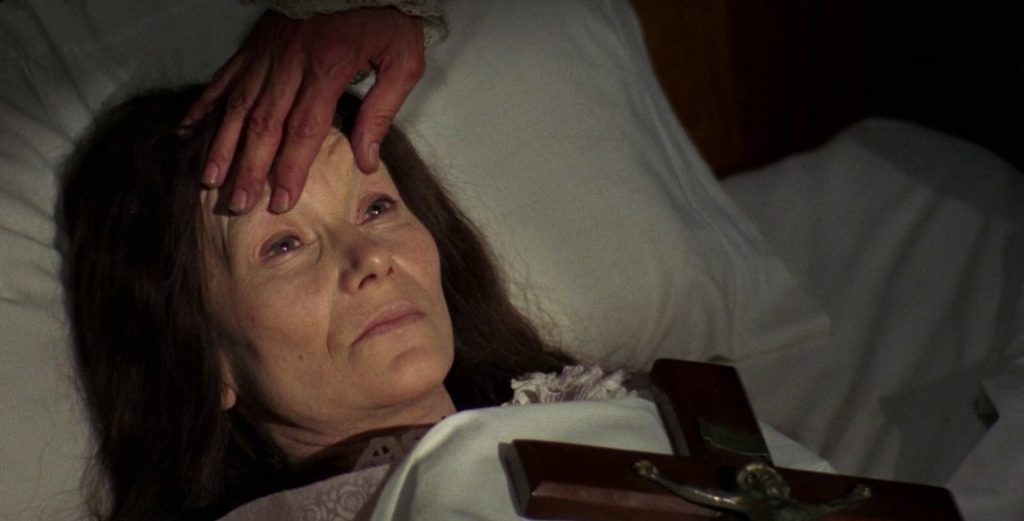
As is the case with all anthologies, some segments are better than others, and what is better will depend completely on the viewer. It’s only as inconsistent as its audience. The quality of the filmmaking is generally good, so the varying mileage will come from what the viewer does and does not like.
The transfer for Cake of Blood is also from a 4K scan of an original negative. It looks awesome. Miles above the odd VHS import that fans have had to settle for until now. The colors pop and the images are slick.
Audio is in Spanish Mono with English subtitles. The aspect ratio is 2.35:1.
The bonus content for Cake of Blood includes a commentary by Rod Barnett of NastyCast and Bloody Pit, and Dr. Adrian Smith, author of Norman J. Warren: Gentleman of Terror. This commentary is a bit dry. It’s mostly just the two trading tidbits of knowledge about the actors and segments. What they’re saying is interesting enough, but the presentation is somewhat sterile.
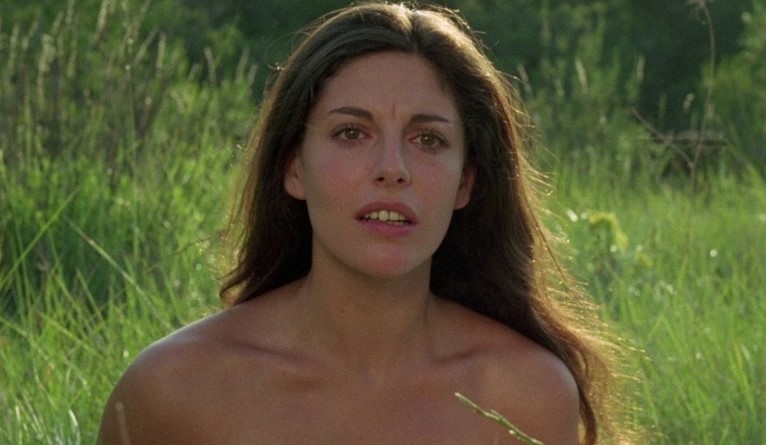
The other features for this disc are all interviews. The first one is with actress Marisa Peredes and is called My Generation. It’s actually fairly dry. But…
The best feature on this disc is I Just Wanted to Have Fun, an interview with segment director/actor Jaime Chávarri, who wrote and directed the The Dance, or Emotional Survivals segment but also acts in Victor Frankenstein for Emilio Martinez-Lázaro. His interview provides insight into his thoughts on horror as well as his contributions to the two segments he was a part of.
There’s also To Whoever Wants to Watch, an interview with late actor José Lifante, where he talks about the segment in which he starred (The Dance, or Emotional Survivals), but the most interesting part is when he discusses working on Jorge Grau’s 1974 film The Living Dead at Manchester Morgue, aka Let Sleeping Corpses Lie.
And then there’s another Angel Salo interview called An Arthouse UFO where he gives his comments on each of the segments.
Disc 3 is Cross of the Devil, which is a 1975 movie written by Paul Naschy (as Jacinto Molina), based on a trio of short stories by Gustavo Adolfo Bécquer – La Cruz del Diablo, El monte de las animas, and Maese Perez. A subsequent rewrite by Juan José Porto, whom Naschy considered a friend, became a sticking point in the relationship between the two men. Hammer Films director John Gilling was brought out of retirement to direct, and the film became his first film since leaving Hammer and his last film in general.
Cross of the Devil is about a drug-addled British writer who is plagued by nightmares of a marauding band of Knights Templar tormenting a woman in white as she screams for help. His sister asks him to come visit her in Spain, but by the time he arrives, she has been murdered. He sets out to find the culprit, which takes him to places from his dreams. It’s a weird movie, and the interpolation of the different Bécquar stories is not always seamless, but that’s part of its odd beauty.
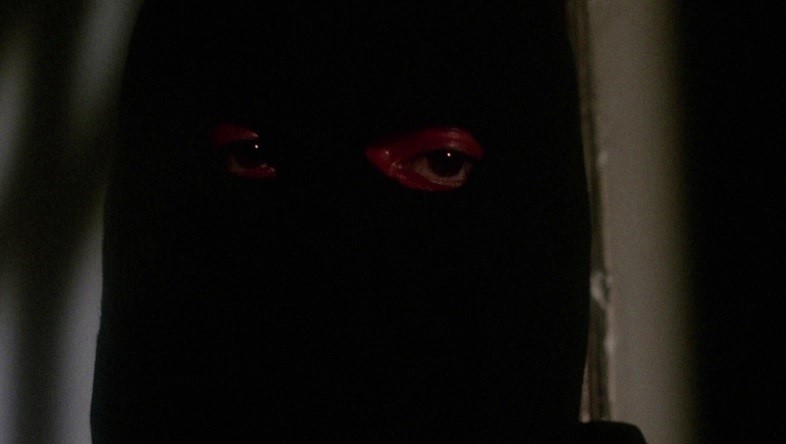
This one is, again, scanned in 4K from an original negative, and it looks terrific. This is another case of a movie looking way better than it ever has, and way better than it really ever should.
The audio is in Spanish Mono, with English subtitles for the first time. The aspect ratio is 1.85:1.
The features for Cross of the Devil are led by a commentary with Anno Dracula author Kim Newman and Brit Noir author Barry Forshaw. This one feels like a conversation between two scholars. It rambles quite a bit, even getting into simply reading interviews with the participants in the film. It’s more like a podcast or a convention panel than a commentary. But it is good listening.
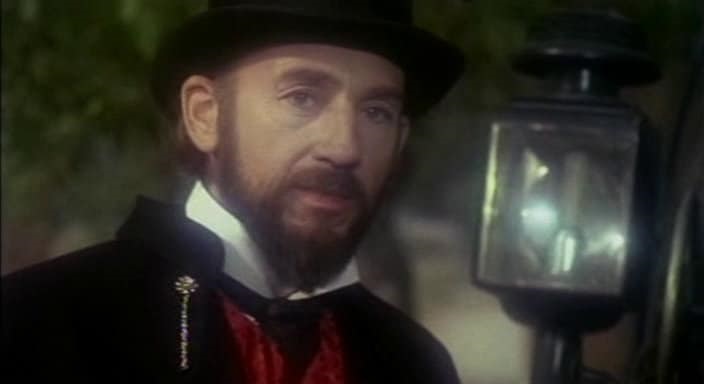
Also again, there are a few interviews. Fascinated by Bécquer is an interview with screenwriter Juan José Porto about how the script came about with Paul Naschy and working with John Gilling. The Real Templar Knights Movie is more from Angel Sala talking about the movie, Bécquer, and the Templar influence. And then, Fantasy and Imagination: The Legacy of Gustavo Adolfo Bécquer is an interview with Xavier Aldana Reyes, author of Spanish Gothic: National Identity, Collaboration and Cultural Adaptation which goes over the three Bécquer stories adapted into the movie.
Finally, Disc 4 is The Night of the Walking Dead, a 1975 movie alternately known as Strange Love of the Vampires. It’s about a terminally ill young woman in a small village who is seduced into the realm of vampires. Directed by León Klimovsky as the third film in an unofficial vampire trilogy that also includes The Vampires Night Orgy and The Dracula Saga, it’s both sexy and shocking. This is pure Spanish Gothic Vampirism.
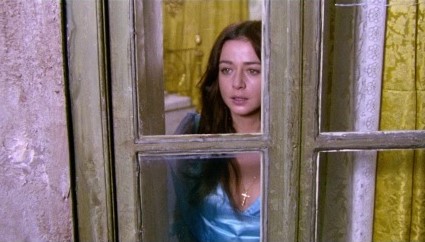
The Night of the Walking Dead is neatly divided into two sections. The first is a fairly typical vampire tale, but about halfway through, it turns into a quirky love story between a lonely vampire and a dying girl. This has been done before and since, but never quite as effectively. There’s heart to this bloodsucking story.
The transfer is from a 2K scan of an original negative. Again, the images pop and sing. This is what obscure film restoration is all about.
Audio is in English Stereo and Spanish Stereo, with captions and English subtitles. The aspect ratio is 1.85:1.
The commentary for this title is by Kat Ellinger, author of Daughters of Darkness. Ellinger is well versed in moviemaking, film history, literature, and folklore, and brings all of that knowledge to the table in an informative commentary.
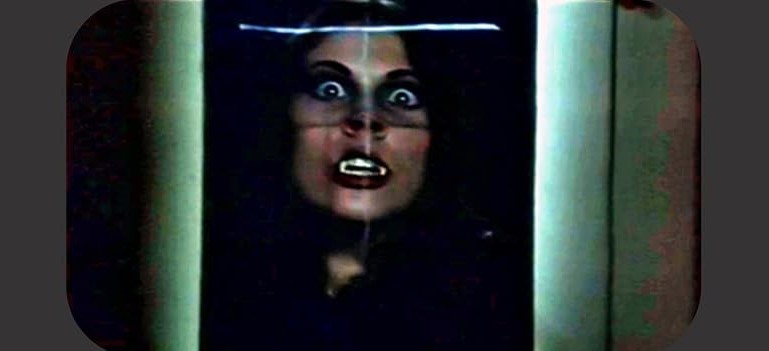
The interviews on this disc feature faces that will be familiar from the other three discs. There’s another segment of the interview with Angel Sala called A Deadly Invitation to Another Dimension, but by now everyone is just looking at the books on his bookshelf about Jaws, Alien, King Kong, and Godzilla. There’s another interview with Juan José Porto called Leo’s Signature that is mostly concerned with director León Klimovsky’s vision for the movie and the influences that affected him. And then there’s also another interview with actor José Lifante that covers not just The Night of the Walking Dead but his entire career, and he has worked with everyone from Stuart Gordon to Terry Gilliam. This is a fun interview.
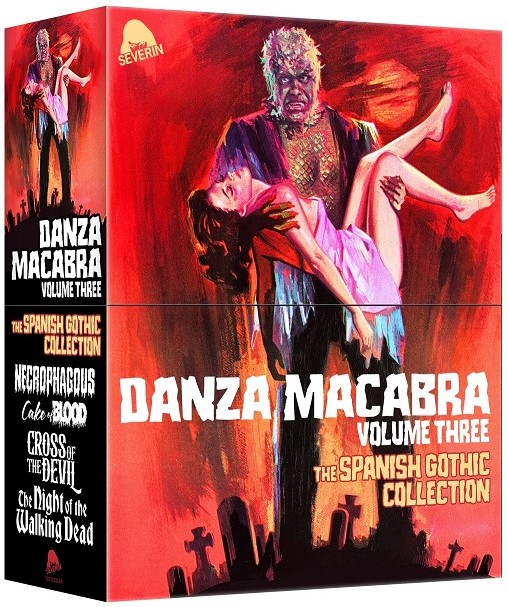
Also, speaking of familiar faces, there’s a video essay by Xavier Aldana Reyes called Spain’s Cinematic Vampires which is about, well, Spain’s cinematic vampires. The name says it all – it’s a quick history lesson about Spanish vampire movies (although, at 24 minutes, it’s the longest non-commentary bonus on the set).
Finally, the extras wrap up a bit anticlimactically with an alternate Spanish language opening credits sequence. Although the music rocks, so it’s worth seeing (and hearing) again.
Basically, Danza Macabra Volume Three: The Spanish Gothic Collection is Severin Films doing what Severin Films does; making hard-to-get films available in a high quality release. Boutique labels like Severin are essential to restoring and protecting the legacies of these old movies. Let’s hope they keep doing it, because they do it as well as (or better than) just about anyone.


